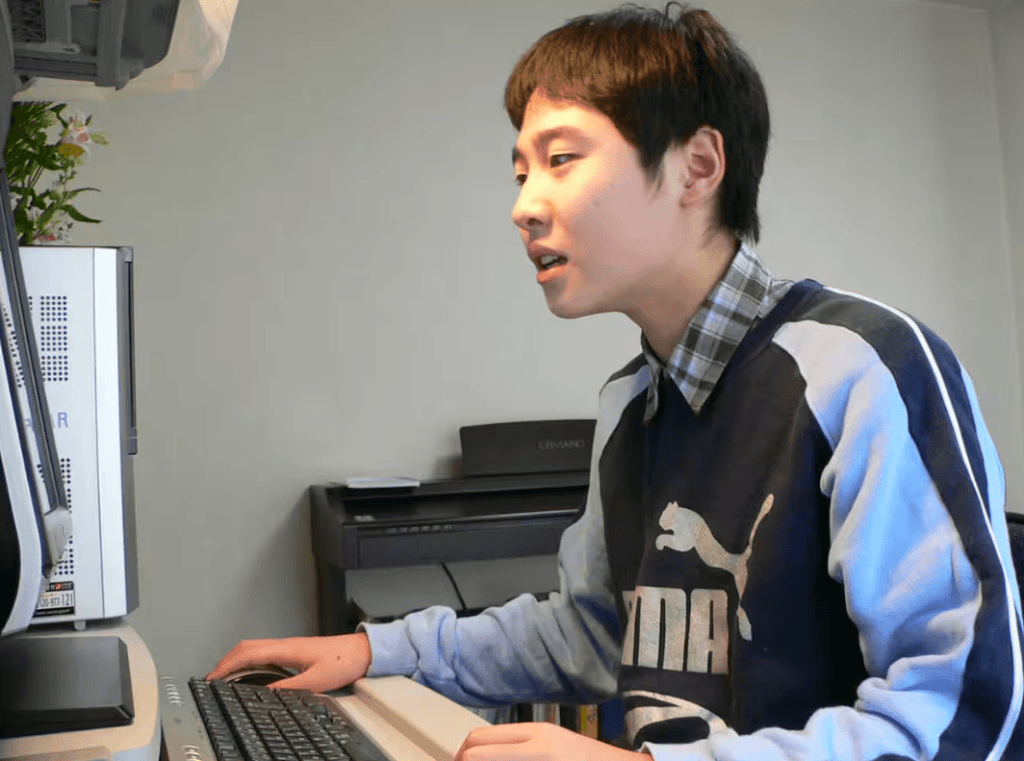When there is an erasure of representation of neurodivergent folks in the field of literature as their experiences and way of perceiving the world is either mocked or negated, the book titled The Reason I Jump: The Inner Voice of a Thirteen-Year-Old Boy with Autism, written by Naoki Higashida, bridges the gap between how neurodivergent and neurotypical people perceive the word.
Higashida, wrote the book in Japanese when he was merely 13 years old, eight years after he was diagnosed with non-speaking autism. While autism restricted Higashida’s verbal communication skills, it did not stop him from expressing himself and sharing his story as he made use of a Japanese character alphabet grid to communicate with others and write the book.
“Many children with autism do not have the means to express themselves, and often even their own parents do not have a clue what they might be thinking.” – Naoki Higashida
The above excerpt from the preface of the book foreshadows that while the book is Higashida’s first-hand account of his journey as an autistic child, it will focus on how he struggled with connecting with his parents due to his neurodivergence. Neurodivergent individuals often struggle with expressing themselves and understanding facial and social cues which creates a communication gap and might result in misunderstanding as could be seen in the book as Higashida shares his struggle of communicating with his parents, especially his mother, K.A. Yoshida who is his primary facilitator or caretaker.
The book was originally written by Higashida in Japanese and published in Japan in 2007 but was translated into English by K.A. Yoshida and David Mitchell in 2013. Since both Yoshida and Mitchell’s children are also diagnosed with autism, there seems to be an additional layer in the English translation of the book where the readers can get a sense of how parents feel when they see their children struggling and are not able to figure out how to make things easier for them. Due to this, the book has been subjected to criticism as well.
Several authors and writers have raised concerns regarding whether or book was written by Higashida on his own or whether his mother facilitated him in writing it which added an additional invisible perspective to it and hence, no longer qualifies to be a first-hand account book of Higashida’s autistic journey.
Neurodivergence and literature: diverse perceptions, diverse style of writing
Higashida has helped people understand the various challenges associated with autism and neurodivergence by giving an insight into his emotional and cognitive world in his book. One of the key aspects of autism is how it impacts the ability of people to communicate and express themselves. Being an autistic individual who struggles with expressing himself verbally and uses an alphabet grid to write and communicate with others, Higashida’s writing style differs drastically from the prominent works of literature which are written by neurotypicals. Instead of writing long sentences and detailed chapters that cover multiple aspects of the story at the same time, the 13-year-old Higashida wrote around 60 short chapters!

Each chapter covers a specific question or aspect about autism which Higashida answers based on his experiences and observations. The simplistic structure of the book makes the book a convenient read for neurodivergent individuals who often struggle with understanding the intent behind the complicated text consisting of lengthy sentences.
Most importantly, in the first few chapters of the book, Higashida explained that he wrote the book to make sure that people, especially neurotypicals who can observe and interpret body language as a tool for communication, can understand how autistic or neurodivergent people struggle with communication.
“When you see an object, it seems that you see it as an entire thing first, and only afterwards do its details follow on. But for people with autism, the details jump straight out at us first of all, and then only gradually, detail by detail, does the whole image float up into focus.“
For instance, the above excerpt from the book highlights how a person with autism feels disconnected from their thoughts and bodily expressions as they struggle to identify subtle hints of emotions that a neurotypical person can identify with ease by observing the various social cues. Moreover, through this text and the chapters framed in the form of questions, Higashida also explains the existence of a complex layer of emotions that influences his behaviour and explains why he acts or behaves in a particular way which goes beyond what a person can figure out from the externalities presented to them.
Communication and gendered care: critical aspects in Higashida’s book
With communication being the primary focus of his book, Higashida has talked a lot about his parents who are his primary caregivers. Autistic people usually face difficulties while talking about what they are feeling and these difficulties are inflated when their behaviour is perceived as peculiar or unacceptable by neurotypicals around them.

In Higashida’s case, he is a neurodivergent but his parents who are his caretakers, are neurotypicals. Due to this, there are several instances when a gap arises between them as while Higashida struggles to express himself, his parents, especially his mother, who is his primary caretaker, struggles to understand him and feels helpless.
In the book The Reason I Jump, there is no explicit mention that Higashida’s mother is his primary caretaker. However, it is mentioned that his mother is his facilitator and there are various instances in the book where Higashida’s mother raises questions surrounding how to raise a child with autism without enough social support as Higashida feels apologetic for being autistic, for being himself. Moreover, the fact that Higashida’s mother took the initiative in translating the book into English while there is no mention of his father also sheds light on how the primary responsibility of raising and taking care of children, especially children with disability, lies with the women.
Throughout the book, Higashida talks about his personal experiences as he tries to combat the various misconceptions surrounding autism. However, one can also read through the lines that invisible labour done by his mother which helped him in developing communication skills and being able to write the book and express himself. This invisible labour of providing support and care to the children is done majorly by the mother as she is expected to provide unconditional support to her child even if her health does not allow her. It is due to the patriarchal notion surrounding women which labels them as more caring, nurturing, and emotionally available, that women are restricted from practising their agency and prioritise the task of being a caregiver. However, the labour done by women as a caregiver is not acknowledged or considered ‘productive labour’ because the capitalist orientation of the world marginalises the unpaid work of women by not recognising how it contributes to the development of society.
Lastly, the book The Reason I Jump: The Inner Voice of a Thirteen-Year-Old Boy with Autism reflects how disability and the feminist struggle for equality can not be seen in isolation. Higashida’s experience as an autistic individual can not be understood without taking into consideration the role played by his caregiver, his mother who helped him navigate the neurotypical world by accommodating and prioritising his needs.
About the author(s)
Neha (She/They) is a neurodivergent queer writer who illustrates occasionally. A student of media and gender studies, Neha is critical of the patriarchal and heteronormative world around her and looks at it from the political lens of intersectionality. Although socially introverted, you can find Neha getting out of her shell and interacting with people, getting to know their experiences, and analyzing how the biased structure of the society impacts the marginalized.





